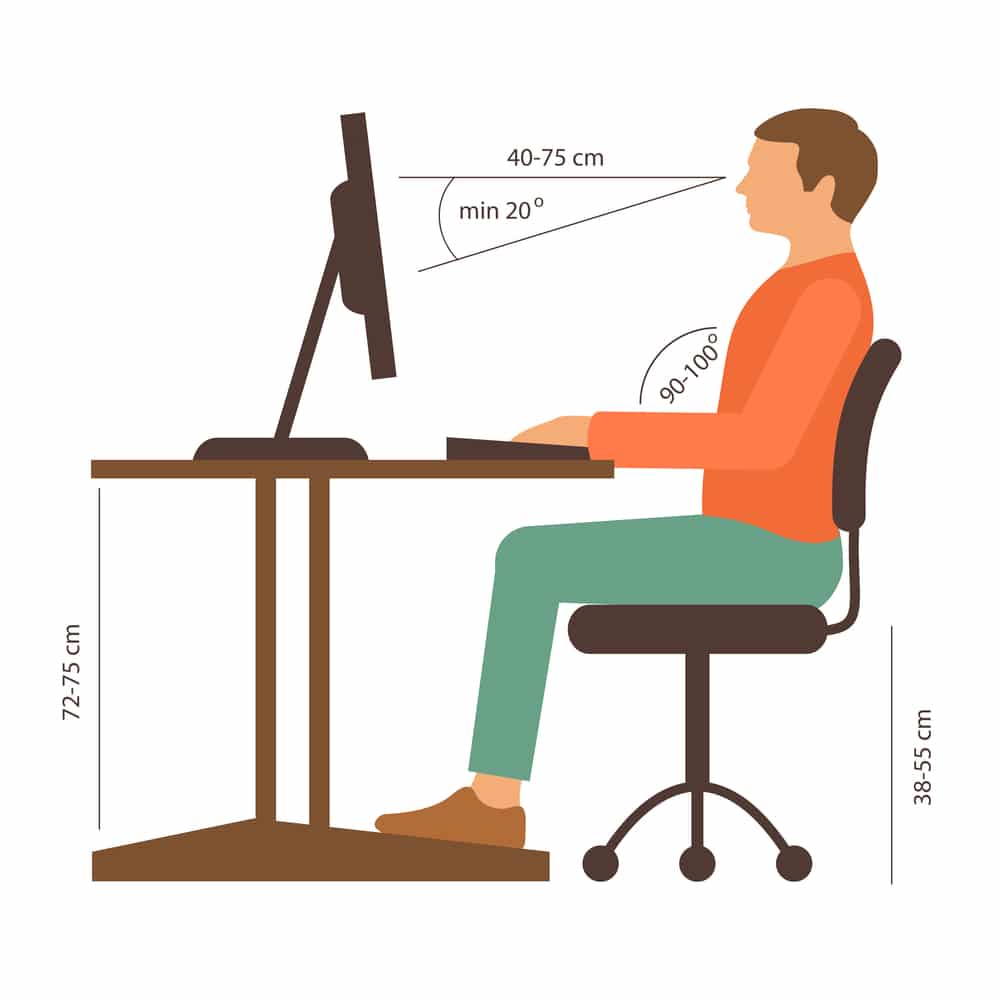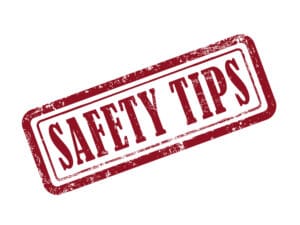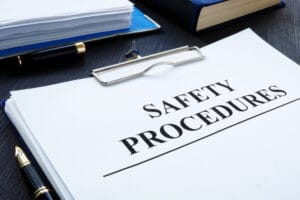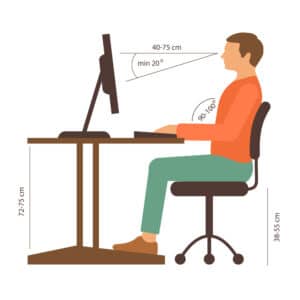11+ Best Office Safety Tips For 2024 – From SafetyVideos.com

People who work in an office interact with a surprising number of safety hazards in the workplace. Many don’t realize that workplace injuries and health issues can happen in any field and at any time.
Employees are at an increased risk of injury and health-related problems without proper workplace safety. These office safety tips will keep you and your co-workers accident and injury-free. We also have a more generic “safety tips for work” article that you should check out. Finally, if you have warehouse employees, be sure to check these safety tips.

The Importance of Office Safety Tips
Work-related injuries are stressful and costly to everyone involved. The health and safety of employees should be a top priority for ethical and financial reasons. Protecting employees from injury is the employer’s responsibility, and in doing so, they protect themselves from liability.
Protects Employees
For workers, an injury can cause pain, suffering, mental distress, or in severe cases, death. This affects the workers’ families and co-workers, who must compensate for the injured workers. The results of an injury can quickly spread to every area of one’s life.
Saves Money
Injured employees are a costly issue for employers and employees alike. There is an opportunity cost in the lost time from the employee out of work. Plus, the coverage of medical bills and fees for attorney claims can be detrimental to a balanced budget.
More Positive Working Environment
A positive workplace environment is crucial to a productive and well-behaved team. Working in unsafe conditions causes stress and discomfort, significantly affecting the workforce’s mindset. Employees may feel worried, frustrated, and angry, making them less productive and increasing employee turnover.

How to Set and Enforce Safety Policies Within The Office
Implementing clear safety protocols and making them known to all employees is crucial. These workplace-specific procedures should be designed to keep your employees safe. Once new safety procedures are determined, employees should receive proper training, and the new policies should be enforced.
Safety protocols can easily prevent injuries and protect the well-being of workers.
Safety Training
Employees knowing their job-specific hazards will help them proactively avoid those hazards. The training should encompass what to do with a workplace hazard and how to prevent it from happening. Learning office safety tips will help build a resilient safety culture for everyone to hold each other accountable for safety.
Safety Team
A designated safety team should continue safety education and reiterate basic office safety tips. Proper safety behaviors should be reinforced, and poor safety etiquette should be managed.
Employees can report unsafe conditions like violating smoking rules or a lack of fire guards as an internal person or team. A safety team is typically a branch of the human resources department. They should also be able to provide solutions for reports of unsafe conditions.
Set Emergency Protocol & Offer Personal Protective Equipment
Employees should be aware of the company’s emergency procedures for natural disasters. This knowledge could make all the difference in the case of power outages, fire, or severe weather. These protocols should include an evacuation plan and a severe weather shelter plan. If your office is in a location where severe weather often strikes, store supplies inside your office’s severe weather shelter.
13 Basic Office Safety Tips
There are safety hazards everywhere, including in a well-maintained office. While they may not be operating machinery other than the copy machine, office employees could injure themselves through falling, carrying boxes, or other office-related safety concerns.
The following basic office safety tips will help avoid a real office safety concern.
1) Provide A Safe Work Environment, To Begin With
The number one way an employer can protect their workers is by providing a safe workplace. The physical office must be free of hazards that could cause workers to trip, fall, or otherwise hurt themselves. For furniture-related safety, desks, cabinets, and heavy items should be secured.
Air quality should be monitored by the building owner or facilities management department. This is to ensure the carbon dioxide levels and radon levels are safe. Mold and other air pollutants should also be managed as they can cause various respiratory illnesses. Fresh air will help keep employees healthy.
All employees should have a safe work environment to focus on their job.
2) Take Breaks and Move Around
Ergonomic injuries are bodily injuries caused by poor posture, stiffness, and muscle stress. These injuries, typically back, neck, and shoulder, are common among office workers who sit at a desk for long hours. Office settings, chairs, and the position to the computer all contribute to these injuries.
Take a break to move when you have the opportunity. Stretch your body to loosen muscle tension, and take several deep breaths to help relax. Reducing workplace stress mentally and physically will help reduce the risk of ergonomic injuries like a pulled back muscle, strained neck, or carpal tunnel syndrome.

3) Optimize Office Ergonomics
As mentioned, ergonomic injuries are common among people working in an office. To help avoid this, improve the quality of your computer station.
Adjustable equipment is highly recommended to accompany movement, alleviate discomfort, and reduce long periods of sitting still. Adjustable standing desks are a popular tool to improve the physical health of office employees.
With a focus on posture and comfort, while working in an office, injury is less likely.
4) Reduce Screen Time
Eye health is another common concern for desk workers due to their long hours looking at computer screen lights. By taking breaks from your computer and looking into the distance for a couple of minutes, your eyes can readjust and rest.
Eye strain from computer screens and blue light can cause several health-related issues. It is known for causing sleep-related issues, increasing stress, causing headaches, and more. If you want more eye safety tips for employees then we have a full write up on that.
It may be difficult to reduce screen time while working, so focus on not using screens during your breaks and reducing screen use during your non-work hours.
5) Dress Appropriately
Dressing appropriately for your job position is essential in keeping workers safe. The most prominent issue for people working in an office is their shoes. Ill-fitting, low-traction shoes can cause falls that lead to injury.
Also, remember to use proper safety gear when visiting a warehouse or job site for work. Workplace safety standards travel with you regardless of where you go for work.
6) Reduce Shortcuts
Rushing through work and taking shortcuts presents a significant risk to workplace safety. Always follow all safety standards to prevent injuries and be mindful of your work environment. Do not run or lift items slowly and with proper lifting posture.
Shortcuts lead to mistakes. And safety mistakes compromise the health and safety of everyone around you.
7) Workplace Tidiness – Keep Your Work Area Clean
An unorganized work environment presents many tripping hazards and health-related hazards. Untidy electrical cords at a computer station can easily trip someone causing injury. Consult your IT specialist to organize cords with cable ties and keep as many items off the floor as possible.
Do not touch electrical outlets, and keep them covered for optimal safety. Do not overfill file cabinet drawers as they can come out quickly or cause the file cabinet to tip over.
It is also essential to keep the office kitchen and bathroom clean to avoid the spread of harmful bacteria and illness.
8) Don’t Come To Work Sick
Not coming to work when ill is more than basic common sense; it’s a duty to all your coworkers. An office is a breeding ground for illness, and staying home when sick is the key to preventing the spread. Personal protective equipment like masks can be used, but avoiding all exposure is better.
Consult your company’s HR department if you are concerned about taking sick days off.
9) Report Unsafe Conditions To Your Supervisor
Reporting unsafe conditions is the best way to remove hazards and help create a safe working environment. If you notice defective equipment, unsafe structural issues, fire hazards, or another safety concern, report it to your company’s safety team.
10) Non-Physical Safety Concerns
Office safety also applies to internet-related problems, such as cyberbullying and mind health-related issues. To prevent internet-related problems and keep the workplace safe from harassment and toxic work environments, implement policies against it and encourage employees to report this behavior.
11) Conduct Fire Drills and Evacuation Training
Teaching office workers where to go in case of a fire is not only a safety issue but also a regulatory compliance issue. Make sure you are doing annual training to teach your employees how to evacuate the office, and where to meet outside in case of an evacuation.
12) Do Ergonomic Assessments on Your Employee Workstations
A big cause of injury for office workers is their desks, computers, and telephones. They use these items all day long and a work area that is not set up correctly is ripe for causing problems. Do an ergonomic assessment to make sure that their desk, computer monitor, and keyboard are at the right height. Also, make sure that the mouse or other input device is ergonomically correct. Any minor tweaks that need to be made can save you and your workers from sustaining an injury.
13) Make Sure Your Staff Has Basic First Aid Training
Simple first-aid training for your office workers can go a long way in keeping a minor incident from becoming a major injury. Whether its simple wound care, learning what to do in case of an allergic reaction, or understanding the basics of CPR, first aid training benefits all employees in the office.
Bottom Line on Office Safety Tips
We hope these tips for your office staff have given you some ideas for training. Teaching basic safety skills to your office workers will help reduce injuries and accidents and keep everyone safe.